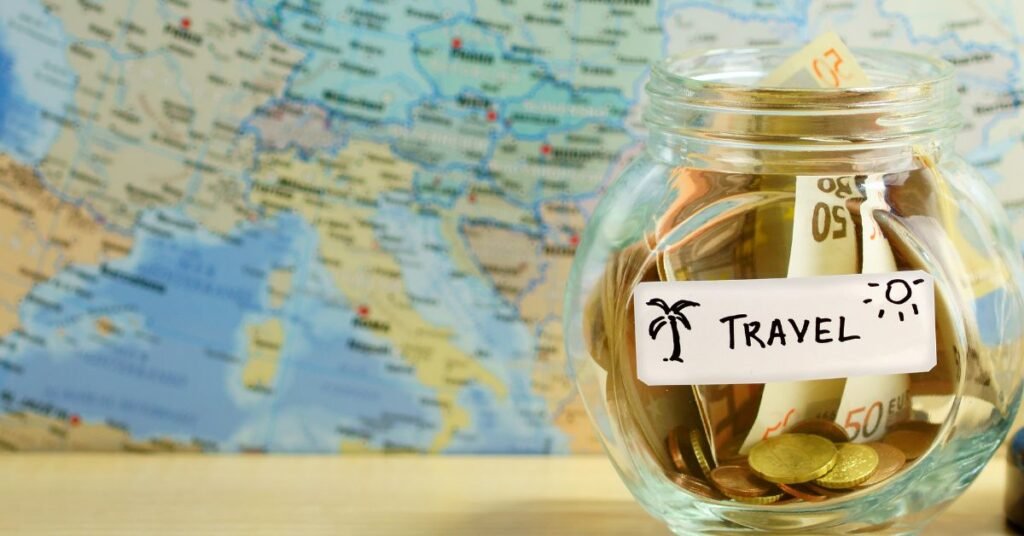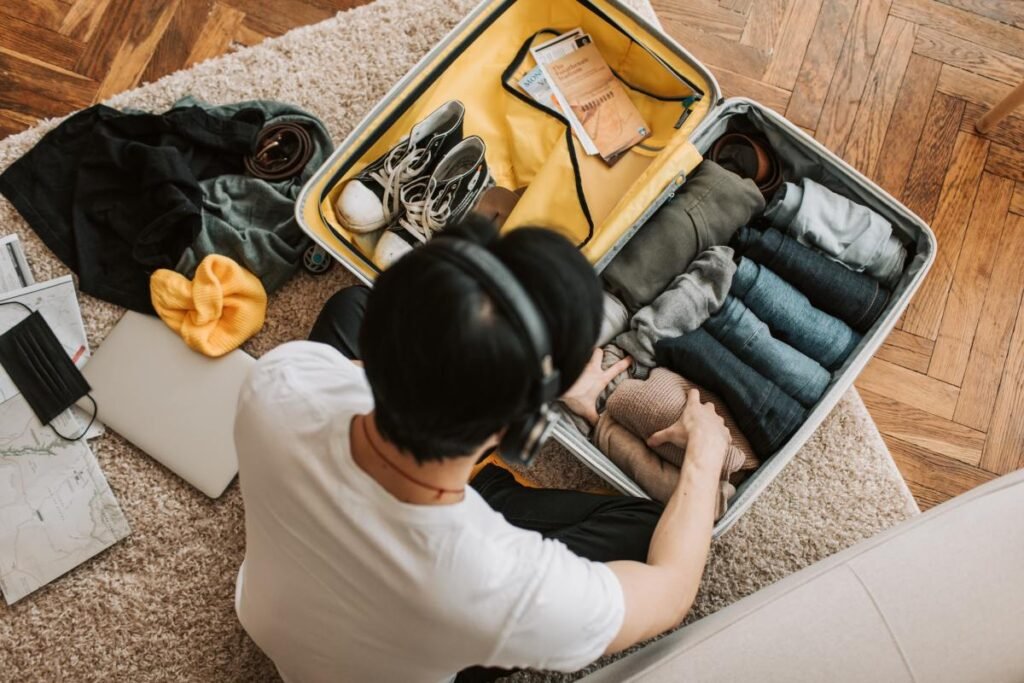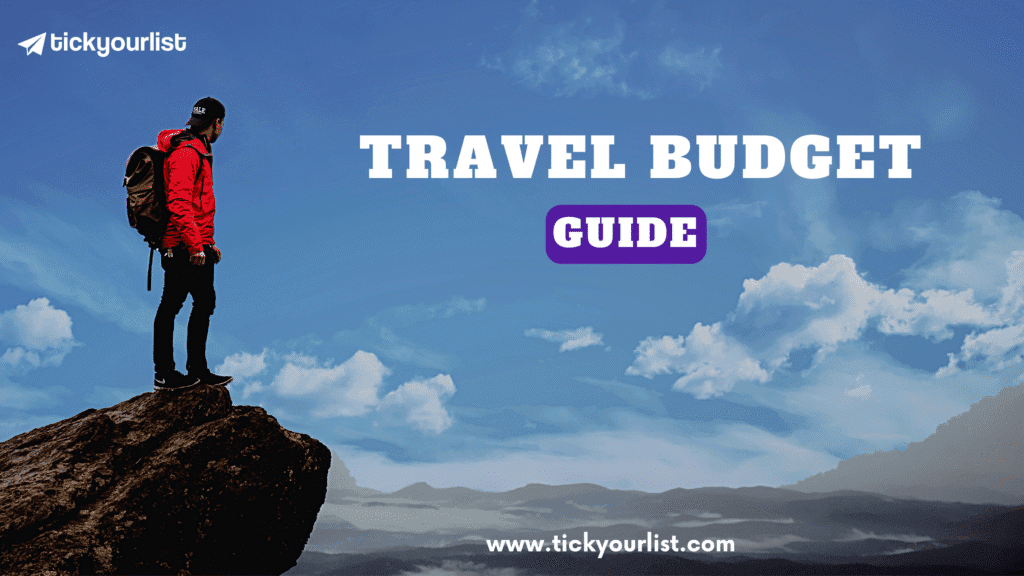Every great adventure starts with a vision the first rays of a new skyline at sunrise, the cafe that emerges as your favorite, and the single track trail that rolls straight towards the view you will never forget. The key to making that vision a reality is a travel budget that feels freeing, instead of limiting. Think of a travel budget as your trip roadmap; it is a casual plan you create as a way to increase pleasant surprise, and decrease stress.
Whenever people ask about how they should budget for their trip, my best response is to think about what you actually want to experience on your trip, and then translate that vision into simple, easy to manage categories, which you can observe without worrying about strict adherence. Being thoughtful about budgeting will allow you to plan a budget trip which still feels rich, and this works whether you are taking a weekend trip down the street, or circumnavigating the world for months.

Build your baseline by mapping the non-negotiables first, then fill in the fun around them
When you travel, you have anchor dates, anchor destinations, and anchor experiences these are the reasons for your trip. Those anchors also establish the foundation of your travel budget. Once you understand the anchors, everything else slots in around them. The value isn’t in limiting yourself; it is in illuminating the path ahead so you can say yes to those experiences that are most meaningful to you. Should a new possibility arrive a cooking class, a scenic ferry at twilight, or an extra stop at a museum you can easily assess whether it belongs, because the basis of your trip is established. This is a significant and powerful shift in budget travel tips and tricks: plan your trip’s heart first, and let everything else close in around that heart.
Turn vague guesses into grounded numbers by researching rhythm, not just rates
Travel costs can vary with seasons, days of the week, and even major events occurring where you are – it is fair to say, how things run and flow in your location can matter as much as that location. Look for patterns – usual times on flights, usual types of meals in a local, usual transportation options…and similar navigation and making your estimates as accurate as possible. Instead of focusing on an extreme or perfect “deal” aim to understand general ranges of what you need. This, rhythm-based principle is an affordable and naive travel tip that helps you stay away from extremes and identify true values when you see them. It will also help you time things better – arriving on a quiet day, getting an early train that runs through your plan quickly or scheduling attractions by sequence so that you spend less time backtracking.

Align your money flow with your travel flow so each day feels balanced and calm
A complete budget isn’t a bunch of estimates, it’s a calendar. Draw the map and match each day to your expectations of spending on food, local transport, entry fees and a few treats. A day by day budget allows us to see each day projecting our way to save or spend, and avoid those last minute decisions you make at the end of a trip. If you want to relax in a beach town take long breakfasts and a few beach walks; if you decide to spend time in a city you may want to spend more time viewing galleries, neighborhood and café hopping. Your goal should be to align your budget travel to your travel styles not someone’s list.
Embrace flexible choices that unlock a cheap way to travel without feeling cheap
Flexibility is the unassumingly powerful driver of value. Small adjustments—including traveling midweek, securing a reasonably priced centrally located overnight stay that minimizes travel times, and swapping a single expensive activity for two delightful inexpensive activities have upsides. You are not sacrificing quality for added savings. You are actually maximizing joy per hour. If your aim is to travel more cheaply, then think in tradeoff logic that allows you to retain the feeling you want. For example, perhaps you want to choose to stay at a boutique guesthouse instead of a larger hotel, or perhaps you want to ride a regional train that has amazing views rather than pay for a short flight. The end result is still luxurious in ways that matter to you only with more prudent logistics.
Use categories that keep you honest and free: move, stay, taste, see, and cushion
The easiest categories are generally the best categories. Moving is air and land transport, including flights, trains, ferries, rideshares, and local metro. Staying is your style of lodging. Tasting is everything you eat and drink, from street snacks to special dinners. Seeing is tours, exhibits, passes, day trips. Cushion is your peace-of-mind cushion. With just these five levels or classifications, your travel budget has enough structure to be accurate but still to remain human. You can quickly compare days, choices, and tradeoffs without getting lost in a thousand spreadsheets. Anytime you have a moment to wonder how to budget for a trip, these categories added immediate clarity and made adjustments absolutely painless.

Pay yourself first by setting mini-milestones and automations that turn planning into momentum
Momentum wins against motivation. Schedule automatic transfers into a travel fund and associate them with mini-milestones when you get there, lock in a booking that counts. At that point you are facilitating a subtle change of intention into action. This is one of those budget travel tips and tricks that compound: each small act diminishes the unknown, and every confirmed piece limits your mental overhead. The day you leave, you will feel more prepared than anxious.
Track lightly on the road so you can stay present and still steer wisely
When you’re traveling, give heavy tracking a break. Each night, have a quick look at your total running tally and if there are any notable spikes up or down. Just simply rebalance it up or down the next day. If you unexpectedly splurge on something spontaneous – embrace it, and readjust. If you underspent on a lull day – roll the leftovers into the next segment. What I’m getting at is keeping travel present and flowing while a budget submerges it – this is where the cost-effective travel tips start to cross over to underlying mindset – YOU ARE NOT COUNTING PENNIES – YOU ARE CURATING MOMENTS.
Leverage smart booking partners and local knowledge to stretch your options
Reliable platforms have the ability to combine options and show bargains that may have missed your attention. When you’re dealing with comparing tours, attraction entries, or city experiences, using tickyourlist offers some alternatives that come with a trusted choice and best price guarantee ensuring you have the valid details so you can avoid ambiguity and hidden hassle. On top of that add local information like, neighborhood markets, free cultural events, and scenic public transport routes to action your exploratory side and you will often find that the smartest value will also ensure an experience that was memorable. This is how to plan a trip, with spontaneous elements: a solid foundation of planning the essentials, with a flexible layer for the spontaneous, and in the moment discoveries, that you only have to add onto your existing plan when you want to take the trip into reasonably interesting experiences.
Prepare for the little things that keep everything smooth
The little things portable phone charger, shoes you’ll enjoy walking in, a credit card that is accepted abroad, dowloadable offline maps etc., all translate to money by eliminating a avoidable last-minute purchase, which has a direct impact on your budget. Good preparation is an inexpensive travel tip in like, reducing spend and stress. It’s think of it as protecting your time as much as your money. The better your logistics, the more opportunity you have for serendipity.

Keep the return gentle close the loop with a quick debrief for your next adventure
Once you are back home, take ten minutes to contemplate what went well, and what you would alter or adjust. Perhaps you identified a situation that you had saved money on without trying or an experience that you could have dedicated more time to. Write it down, and keep it in a place you will see the next time you travel. With a few additional trips and making notes of this type, your personal playbook becomes priceless, and planning a budget friendly vacation turns into rote motion. You will be aware of your sweet spot for specific types of accommodations, travel modes you prefer, and the cadence that brings you the most happiness.
Your next stress-free adventure starts now
A good travel budget doesn’t limit your trip; it expands it by providing a calm and solid foundation to every day. From your dream, to your priorities, to where your rhythm takes you for estimates, consider it a light touch as human as you are, and whether you find discounts or preferential rates from tour providers, activities or salted itinerated experiences, you’ll book with tickyourlist and step onto your journey with a plan that is working with your possibilities.
Frequently Asked Questions your travel budget doubts, answered
How do I start if I’ve never created a travel budget before?
Estimate each using typical patterns for your destination rather than chasing a single perfect deal. This gives structure without overwhelm and makes updates effortless.
What’s the most reliable cheap way to travel without compromising comfort?
Swap one expensive attraction for two meaningful local experiences, and lean into neighborhood food culture. You’ll keep comfort while freeing funds for the moments that matter.
How can I keep track on the road without constantly doing math?
Use a simple daily check-in. Note yesterday’s total, glance at your cushion, and adjust the day ahead by a small amount if needed. Light, consistent awareness prevents drift and keeps stress low.
How do I avoid overspending on food while still tasting the destination?
Design your days with a mix of casual local spots, market snacks, and a few planned sit-down meals. Lunch can often be your feature meal, leaving evenings open for strolling and small bites.
What if my plans change mid-trip and I need to pivot my budget?
Revisit your categories, shift a little from cushion or from days that run lighter, and use local or regional transit to realign. A flexible plan is resilient; small adjustments keep the overall experience intact.






